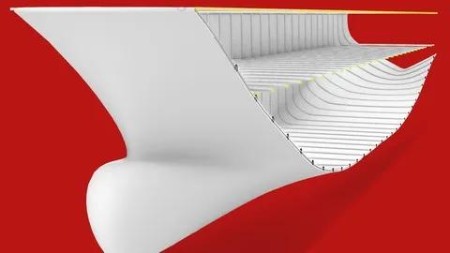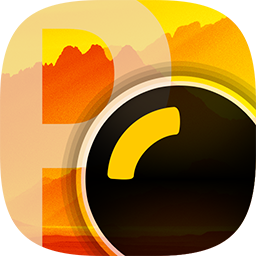Most Commented
Rhino 3D - Marine Architecture - Beginner Course




Description material

Rhino 3D - Marine Architecture - Beginner Course
Published 11/2024
MP4 | Video: h264, 1920x1080 | Audio: AAC, 44.1 KHz
Language: English | Size: 3.91 GB | Duration: 7h 18m
Foundations of Marine Architecture: Designing with Rhino 3D
What you'll learn
Basic Course Introduction and Interface. Interface Navigation and Overview
Basic Commands for 1D, 2D, 3D. Detail understanding of 2D commands line, polyline etc.
Basic understanding of Surface.
Transform tool commands like extrude, scale, rotate etc
Detail transformation tools for 1D, 2D, 3D.
Detail tool for 2D like taper, twist, revolve, bend, stretch etc
Detail transformative commands like extrude commands, loft contour etc
Focus on Sweep1 and Sweep 2 commands, tween curve, bend
Organization of the project overview. Project management like layering, group, blocks, import export, assigning material etc.
Surface and surface editing tools trim, fillet, offset, tween surface etc
Focus on Blend tool for creation of product, 3D solid editing tools like Boolean, shell, creating holes and patterns, chamfer.
Unroll surface, fillet and flow command, basic overview of material application and lighting
Project with layout space, composition, Section, section 3D, hatching
Requirements
This is the Beginner course and no prior knowledge of software is necessary. Familiar with AutoCAD is advantageous but not required.
Description
Dive into the world of marine architecture with this comprehensive beginner-level course designed to introduce you to the fundamentals of 3D design using Rhino 3D. Tailored for aspiring designers, architects, and enthusiasts, this program focuses on the principles of creating innovative and functional marine structures and vessels.This course begins with an introduction to the Rhino 3D interface and essential tools, guiding participants through step-by-step tutorials on 3D modeling and visualization. You will explore the fundamentals of shape creation, surface modeling, and hull design, gaining a solid foundation in the techniques used in marine architecture. Practical exercises and projects will help reinforce these skills, allowing you to craft precise and detailed models.Special attention is given to the unique challenges of marine design, such as hydrodynamics, surface analysis, and optimization, preparing you to approach real-world scenarios with confidence and creativity. The curriculum also highlights efficient workflows and industry-standard practices, ensuring you are well-prepared to transition into more advanced design work.Whether you're a student eager to explore a new field, a professional seeking to expand your skill set, or a hobbyist passionate about marine design, this course provides the tools and knowledge to turn your ideas into reality. By the end of the program, you'll have a strong understanding of Rhino 3D and its application in marine architecture, setting you on a path to design excellence in this dynamic and specialized field.
Overview
Section 1: Introduction - Instructor
Lecture 1 Instructor Introduction
Section 2: Introduction to Rhino3D
Lecture 2 Rhino3D Interface
Lecture 3 Mouse Interface
Lecture 4 Rhino 1D
Lecture 5 Rhino 1D - Part2
Lecture 6 Rhino - 1D-Part3
Lecture 7 Editing a Curve with Control Points
Lecture 8 Rhino - 2D
Lecture 9 Rhino - 3D
Lecture 10 Display Options
Lecture 11 Part Selection
Section 3: 1D 2D and 3D
Lecture 12 Rhino - 1D editing
Lecture 13 Rino -Patch - part 1
Lecture 14 Rhino - Patch - Part2
Lecture 15 Rhino - Patch - Part3
Lecture 16 Rhino - Extrude - Part 1
Lecture 17 Rhino - Extrude - Part 2
Lecture 18 Rhino - Extrude - Part 3
Lecture 19 Rhino - Revolve and Array
Lecture 20 Rhino - Transform scale and Rotate
Lecture 21 Rhino - Transform surface with control points
Lecture 22 Rhino - Taper Twist and Bend
Lecture 23 Rhino - Extrude Surface
Lecture 24 Rhino - Loft
Lecture 25 Rhino - Loft Control Points
Lecture 26 Rhino - Contour Part 1
Lecture 27 Rhino - Contour Part 2
Lecture 28 Rhino - Select 1D, 2D, 3D
Section 4: Refining
Lecture 29 Rhino - Weight
Lecture 30 Rhino - Sweep 1 & 2
Lecture 31 Rhino - Record History
Lecture 32 Rhino - Mirror & Array
Lecture 33 Rhino - Tween Curve - Part 1
Lecture 34 Rhino - Tween Curve - Part 2
Lecture 35 Rhino - Cap & Join
Section 5: Rhino - Design Management
Lecture 36 Rhino - Layer management
Lecture 37 Rhino - Group and Block
Lecture 38 Rhino - 2D Import
Section 6: Rhino - 2D Editing
Lecture 39 Rhino - Trim Fillet & Chamfer
Lecture 40 Rhino - Offset & Symmetry
Lecture 41 Rhino - Set Pt Origin & Project
Lecture 42 Rhino - Blend
Lecture 43 Rhino - Rebuild
Section 7: Rhino - Making of Hull & Analysis
Lecture 44 Rhino - Making of Hull
Lecture 45 Rhino - Hydraulics and Analysis
Section 8: Rhino - 3D
Lecture 46 Rhino - Introduction to 3D
Lecture 47 Rhino - Boolean
Lecture 48 Rhino - Solid Editing and Cage Edit
Lecture 49 Rhino - Solid Editing - Make hole
Lecture 50 Rhino - Solid Editing - Extract
Lecture 51 Rhino - Solid Editing - Chamfer and Fillet
Lecture 52 Rhino - Solid Editing - Flow
Section 9: Rhino - New Addition - SubD & Push Pull
Lecture 53 Rhino - SubD
Lecture 54 Rhino - Pushpull
Section 10: Rhino - Presentation
Lecture 55 Rhino - Object Visual Style
Lecture 56 Rhino - Presentation - Viewport Camera & Options
Lecture 57 Rhino - Presentation - Layout
Lecture 58 Rhino - Presentation - Layout Section
Lecture 59 Rhino - Presentation - Split and Clipping Plane
Lecture 60 Rhino - Presentation - Make 2D
Lecture 61 Rhino - Presentation - Material
Lecture 62 Rhino - Presentation - Layout - Final Detail
Beginner Course for Marine Architecture,Rhino Beginner any Field

Fikper
https://fikper.com/dzdT8tSJF8/Rhino.3D.Marine.Architecture.Beginner.Course.part1.rar.html
https://fikper.com/TDmc1Lylsn/Rhino.3D.Marine.Architecture.Beginner.Course.part2.rar.html
https://fikper.com/PkeJpcOoLE/Rhino.3D.Marine.Architecture.Beginner.Course.part3.rar.html
FileAxa
https://fileaxa.com/75w78nwgu3d0/Rhino.3D.Marine.Architecture.Beginner.Course.part1.rar
https://fileaxa.com/4u945pdvk7jh/Rhino.3D.Marine.Architecture.Beginner.Course.part2.rar
https://fileaxa.com/1uqlq1fwjktt/Rhino.3D.Marine.Architecture.Beginner.Course.part3.rar
RapidGator
https://rapidgator.net/file/718beba765faf9ae743864a9e695067f/Rhino.3D.Marine.Architecture.Beginner.Course.part1.rar
https://rapidgator.net/file/318107dbff1062947422d12d733c8ed6/Rhino.3D.Marine.Architecture.Beginner.Course.part2.rar
https://rapidgator.net/file/05f0f6ab28ece87a3f4938fc2261906e/Rhino.3D.Marine.Architecture.Beginner.Course.part3.rar
TurboBit
https://turbobit.net/lweqwpyx6jho/Rhino.3D.Marine.Architecture.Beginner.Course.part1.rar.html
https://turbobit.net/b8hz0gzvw7g1/Rhino.3D.Marine.Architecture.Beginner.Course.part2.rar.html
https://turbobit.net/kayaa1lresql/Rhino.3D.Marine.Architecture.Beginner.Course.part3.rar.html
Join to our telegram Group
Information
Users of Guests are not allowed to comment this publication.
Users of Guests are not allowed to comment this publication.
Choose Site Language
Recommended news
Commented



![eM Client Pro 9.2.1735 Multilingual [Updated]](https://pikky.net/medium/wXgc.png)






![Movavi Video Editor 24.0.2.0 Multilingual [ Updated]](https://pikky.net/medium/qhrc.png)

